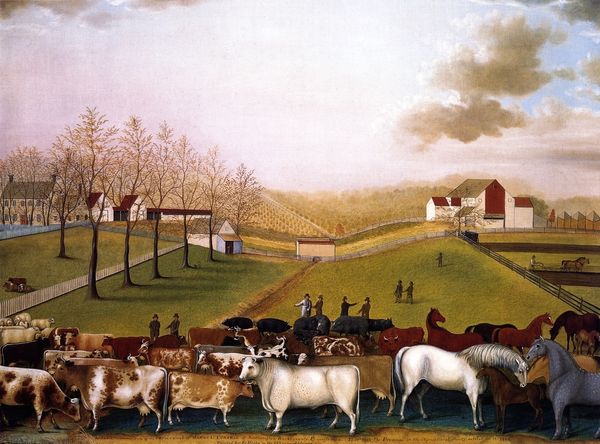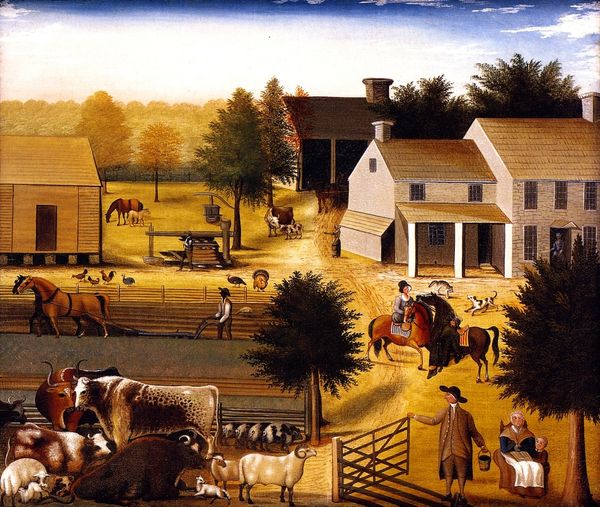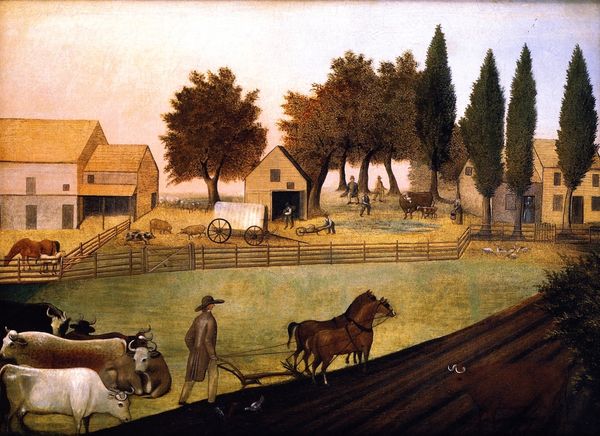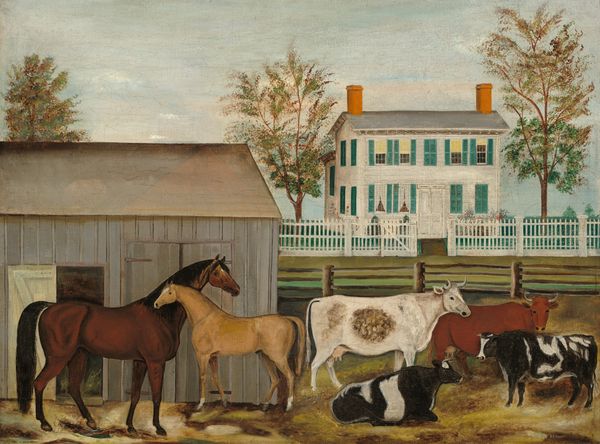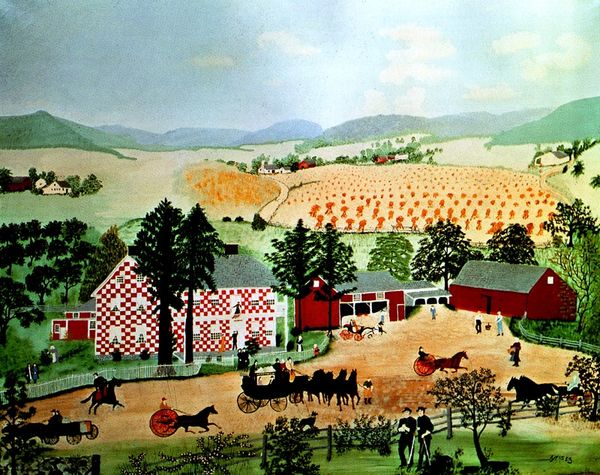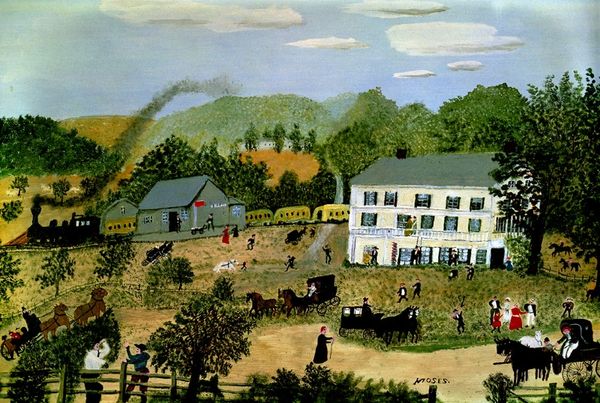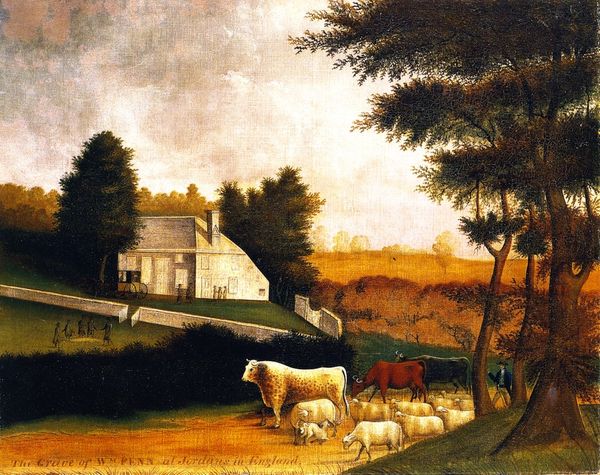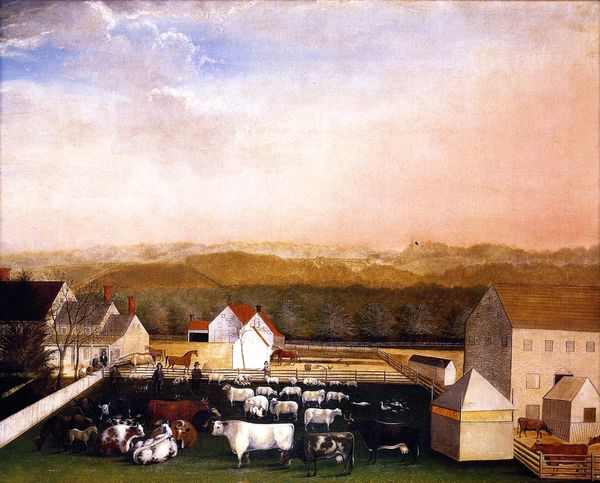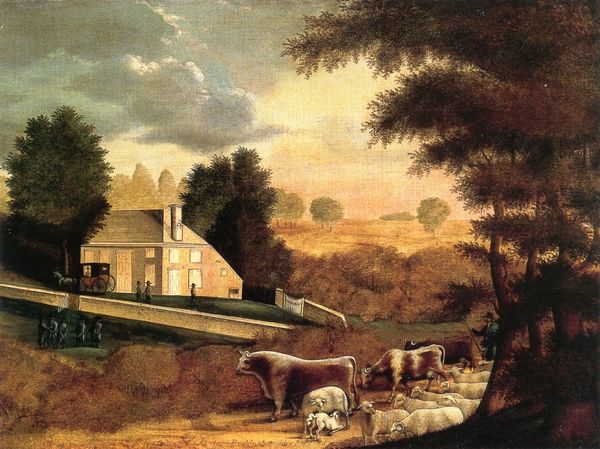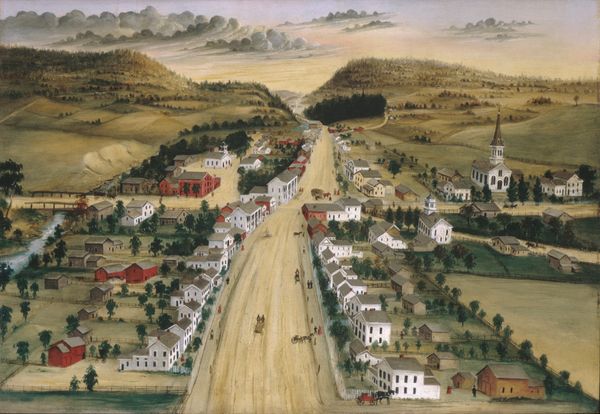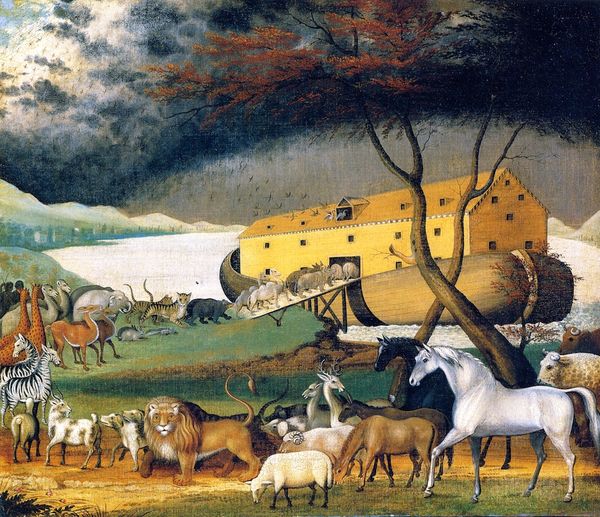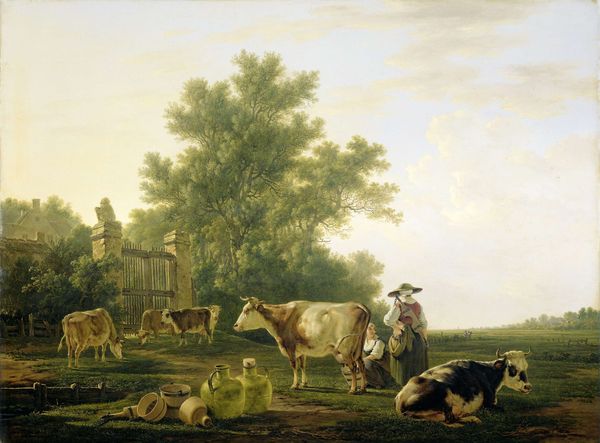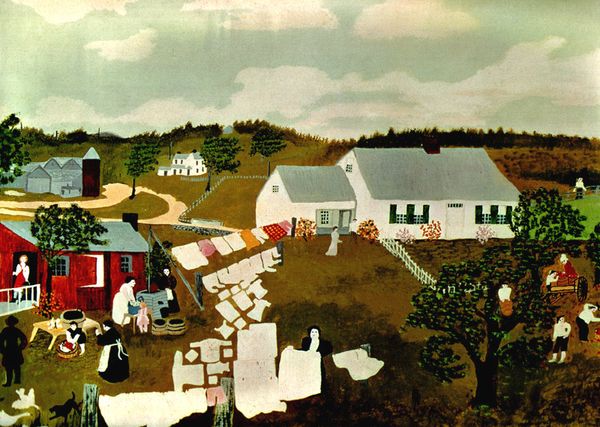
painting, oil-paint
#
urban landscape
#
architectural landscape
#
rural-area
#
painting
#
oil-paint
#
landscape
#
house
#
impressionist landscape
#
oil painting
#
folk-art
#
hudson-river-school
#
genre-painting
#
realism
Copyright: Public domain
Curator: Here we have "The Residence of David Twining in 1785," an oil on canvas created in 1847 by Edward Hicks. Editor: Oh, wow. It's like a patchwork quilt of rural life. There’s something so calming, so deliberately simple about it, almost like a stage set. But it’s not flat; there’s a surprising depth that draws you in. Curator: It’s fascinating to view this as more than just a bucolic scene. Hicks, a Quaker minister and folk artist, situates us within a specific historical moment and social ideology. Consider the historical context—the romanticized vision of early American agrarian life, juxtaposed with the realities of colonization and social hierarchies embedded in such communities. Editor: That's interesting... It’s that almost naïve perspective, though, isn’t it? I mean, I know intellectually what you’re saying about power and hierarchy but it is very charming at first glance! Everything’s so neat, so orderly—sheep, cows, people...all arranged like toys. It's the perfect portrait of…well, somebody's perfect world, I guess! Curator: Right! Hicks, deeply involved in the anti-slavery movement, paints an ostensibly harmonious landscape. We might ask ourselves, whose harmony is represented? Is it intentionally overlooking the tensions beneath the surface? Or is it a utopian aspiration? Note how everyone seems to be actively participating in their roles. Even the livestock are contributing. Editor: And they are cute livestock. Little fluffy sheep! I do get the sense that he believes in this idealized life, though. Like it’s both a memory and a wish? I can’t help but feel nostalgic when I look at the buildings in the background… Curator: Well, the appeal of nostalgia is precisely its selective amnesia. This painting reflects a conscious shaping of collective memory. How can we reconcile that quaintness with a critical understanding of early America? The painting asks us to reckon with a legacy of inequality even as it seemingly celebrates an idyllic past. Editor: Okay, point taken! It’s layered. What starts as a simple pleasure actually prods at you! Well, now, whenever I come across one of these, I know to give it a good second, or third, look! Thanks. Curator: Indeed. This artwork invites viewers to engage critically with representations of the past, urging us to consider whose stories are amplified and whose are erased.
Comments
No comments
Be the first to comment and join the conversation on the ultimate creative platform.
